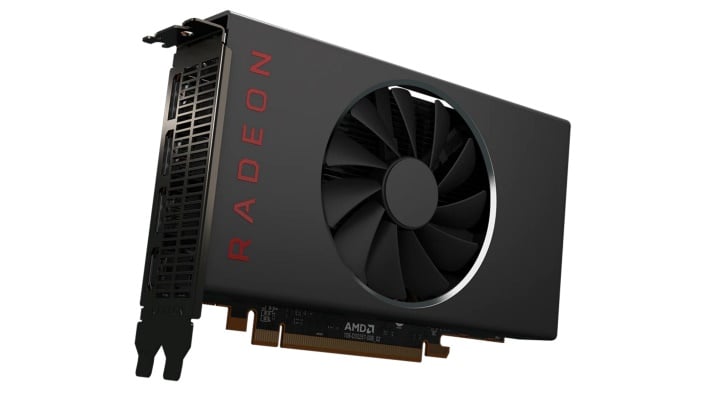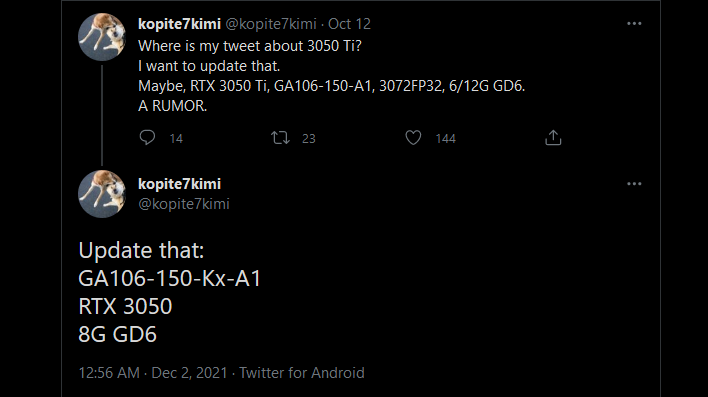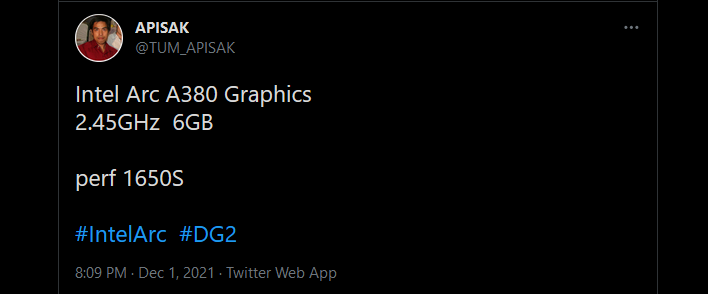Radeon RX 6500 XT, GeForce RTX 3050 And Intel Arc A380 On Track For A Budget GPU Brawl

Given inflated prices and limited availability making it difficult for consumers to buy graphics cards, it's been a reasonable play for PC gamers to build machines with the intent to game on their integrated graphics solutions in the interim. Modern IGPs from Intel and especially AMD are quite capable, and can hold their own even in many modern games—as long as you keep the resolution low.
If you're one of those folks with a fairly-new rig based on a Ryzen 5 5600G or Core i5-12600K just waiting for a GPU to slap down into your system, you might be in luck early next year, because AMD, NVIDIA, and even Intel all appear to have entry-level graphics cards on the way. We've reported before on the Radeon RX 6500 XT, the Radeon RX 6400, and the GeForce RTX 3050, but today we have some confirmation of the details of those parts, as well as news of a low-end Intel Arc card.
Meanwhile, the Radeon RX 6400 will use the same GPU in slightly cut-down format; sporting six WGPs instead of eight, it will thus have 768 stream processors. Otherwise it will be the same, including the 4GB of GDDR6 memory and 64-bit bus width, although according to Videocardz' unnamed source, it will not require a peripheral power connector like its bigger brother.
These will probably be the cheapest video cards to date with hardware acceleration for DirectX Ray-tracing (DXR). It will be interesting to observe DXR performance on these cards; with just two ray acceleration units per WGP, RDNA2's ray-tracing performance isn't outstanding, and such small GPUs with limited memory bandwidth may not be able to make much use of the feature at all. Both of these cards are apparently due in Q1 2022.
On the NVIDIA side of things, kopite7kimi tweeted today with an update to his take on the RTX 3050. With this, he agrees with the last leak that implied the RTX 3050 had been moved up a notch to specifications originally intended to be branded "RTX 3050 Ti." That is to say that the desktop RTX 3050 will apparently be based on "GA106-150-Kx-A1" silicon, rather than the smaller GA107 GPU that is used in laptops.
That puts the GeForce RTX 3050 well ahead of its budget gaming competition from the red and blue teams, at least in terms of specifications. Thanks to the GA106 upgrade, we expect the RTX 3050 to come in with some 3,072 shader processors (ahem, "CUDA cores"), as well as a 128-bit memory bus connected to fully 8 GB of GDDR6 memory. As a result, we reckon the new baby GeForce will be priced well ahead of its supposed competition when it arrives a bit later, in Q2 of next year.
Finally, the Intel news. Well-respected Twitter leakster @TUM_APISAK mentioned an upcoming Intel graphics card by name yesterday morning, known as "Arc A380". He seems to indicate that it will be using the DG2 GPU with 128 execution units (EUs), which would give it 1,024 shader processors. He also specifies a clock rate—2.45GHz—and a memory capacity of 6GB.
It's not clear whether this is intended to be a mobile or desktop GPU, but with a relatively high GPU clock rate of 2.45 GHz we'd be surprised to see this part in laptops. Indeed, it seems more like an entry-level desktop card, but with such a small GPU a 192-bit bus seems unlikely, giving us an unusual 96-bit bus width for the 6GB of memory.
TUM_APISAK comments that the performance is similar to a GeForce GTX 1650 SUPER, which is pretty underwhelming for a part coming out early next year. Hopefully this similarly-small GPU can be found in single-slot and low-profile form, because that kind of performance in a tiny graphics card is still something to appreciate. It's also possible that the preliminary benchmarks that the leaker is referencing are laboring under premature drivers.
Before any of these cards hit, we've got the GeForce RTX 2060 12GB, which lands next week. There's also still the looming prospect of a GeForce 3000-series refresh early next year. Here's hoping that some of us can actually get our hands on any of these GPUs.



